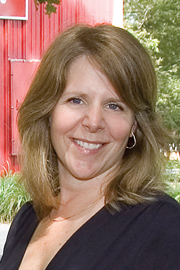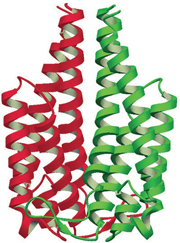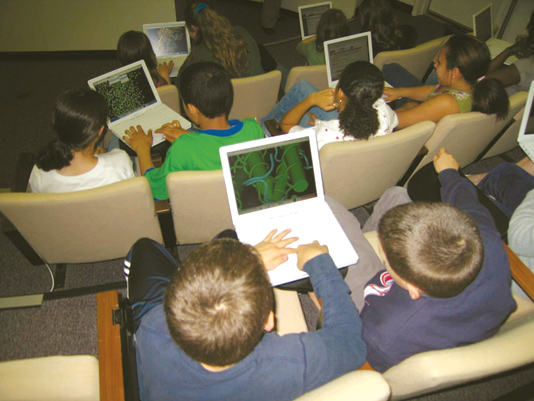
for Structural Bioinformatics Protein Data Bank
Winter 2009
Number 40
| EDUCATION
CORNER
Many science educators face the challenge of successfully making the connection between what is learned in a classroom and “real” science. At Brookhaven National Laboratory’s Science Learning Center, the two go hand in hand; its science-based educational facility is located within a world-class scientific research facility. The Science Learning Center offers hands-on lab experiences encompassing such disciplines as biology, chemistry, physics, and nanotechnology for secondary level students. These programs are aligned with the National Science Education Standards, and each program highlights the Laboratory’s scientific research and achievements. The Protein Data Bank (PDB) originated at Brookhaven in 1971 and was managed by the Lab until 1999. Many of the protein structures stored in the PDB were experimentally determined using intense X-ray beams at the Laboratory’s National Synchrotron Light Source (NSLS). Many important discoveries were made at the NSLS. For example, the discovery of key proteins, OspA and OspC, located on the outer surface of the bacterium that causes Lyme disease, led to the development of Lyme vaccines for humans. Also at this laboratory, scientists were able to get a three-dimensional image of a virus enzyme, adenovirus protease, which may lead to the development of new anti-viral drugs. Both of these protein structures can be found in the PDB.
How does this complex information get translated to a level that a middle school student can understand? The answer: through hands-on science. At the Science Learning Center, we focus on making abstract scientific concepts real using activities grounded in research done at BNL. We offer a variety of classes on challenging subjects, including DNA Extraction, Gene Transfer and Genetic Engineering, and Protein Structural Biology in 3D: The Shape of Things to Come. These classes are scalable, so they can offer an introduction to the material for students or reinforce what was already learned in their classrooms as needed. Students come to the Science Learning Center to build cell models and perform DNA extractions. They genetically transform bacteria with a jellyfish gene, Green Fluorescent Protein (GFP), and culture the green bacteria that fluoresce under UV light. Students purify the GFP and learn how scientists use this same technique. The students don stereographic glasses and view a variety of molecules, including GFP, in a 3D visualization theater. Our educators make the connection between DNA, protein shape and function, and how that function is expressed as a trait. The students have the opportunity to use a tool that scientists at Brookhaven use, the PDB. The students are given laptop computers so they can search for the GFP structure. They manipulate the protein nicknamed the “light in the can” and seek out additional fluorescent proteins and make comparisons to the structures and traits. Students are encouraged to continue this research on their own.
Using scientific tools is an effective way to motivate and excite students of all ages about science. Developing an understanding of why it is important and relevant to everyday life is a challenge. The Science Learning Center has found great success in bridging the gap between classroom learning and world-class scientific research. The Office of Educational Program's Science Learning Center (www.bnl.gov/slc) offers programs to students in grades 1-12, featuring interactive exhibits, hands-on labs, and programs that demonstrate basic scientific principles and utilize the inquiry method of teaching. Brookhaven National Laboratory is operated and managed for the U.S. Department of Energy’s Office of Science by Brookhaven Science Associates, a limited-liability company founded by the Research Foundation of the State University of New York on behalf of Stony Brook University and Battelle, a nonprofit, applied science and technology organization. |
E-mail: info@rcsb.org • Web: www.pdb.org • FTP: ftp.wwpdb.org
The RCSB PDB is a member of the wwPDB (www.wwpdb.org)


